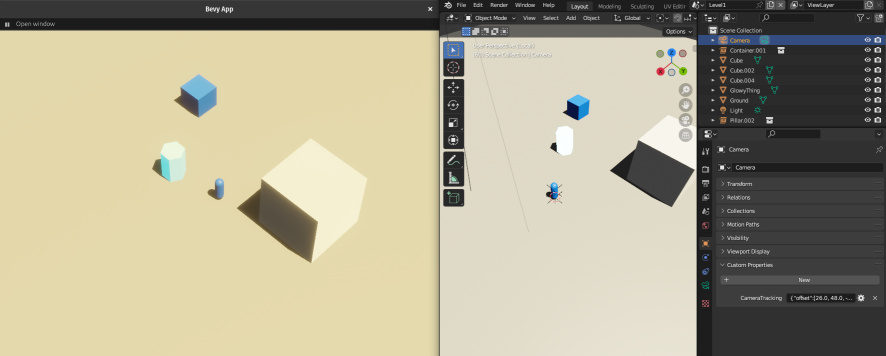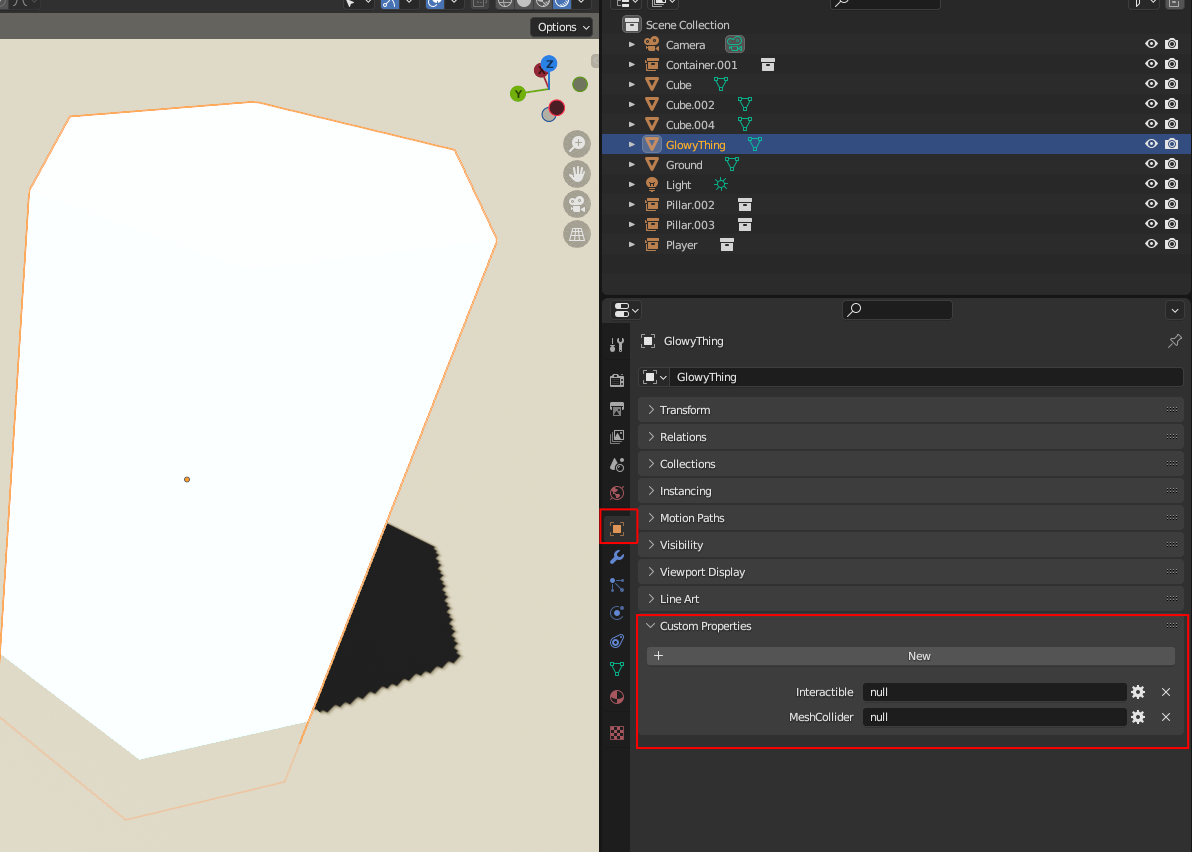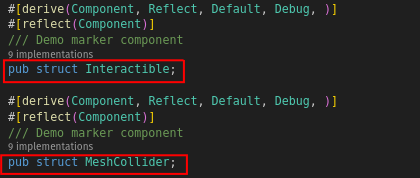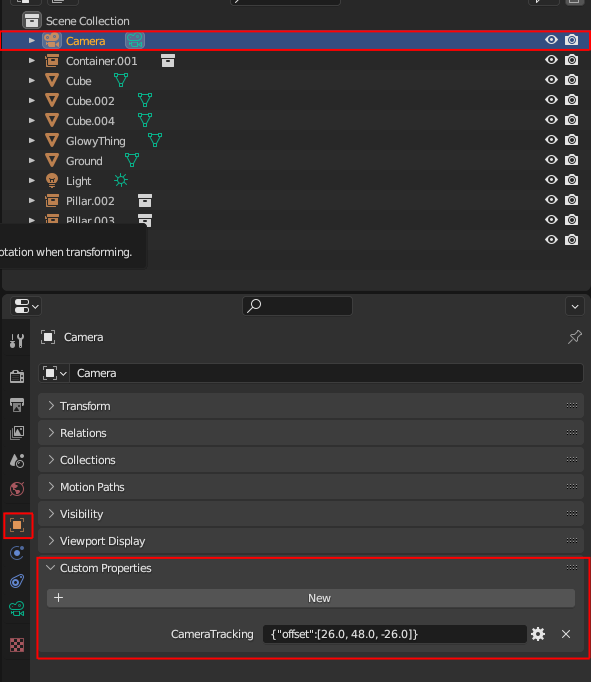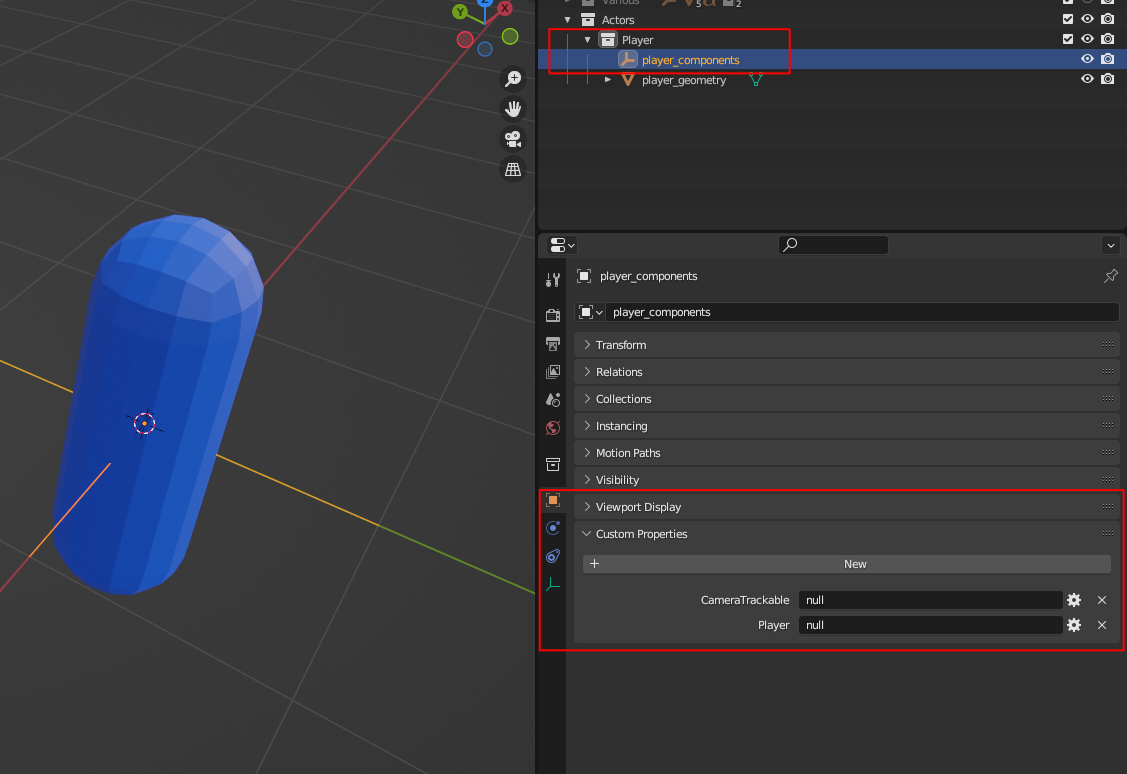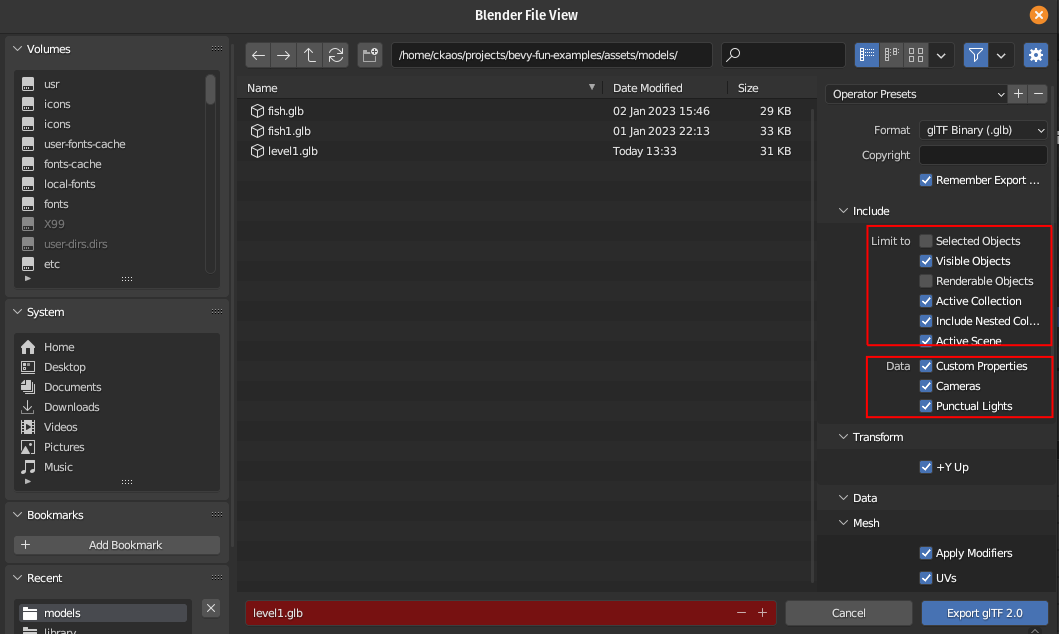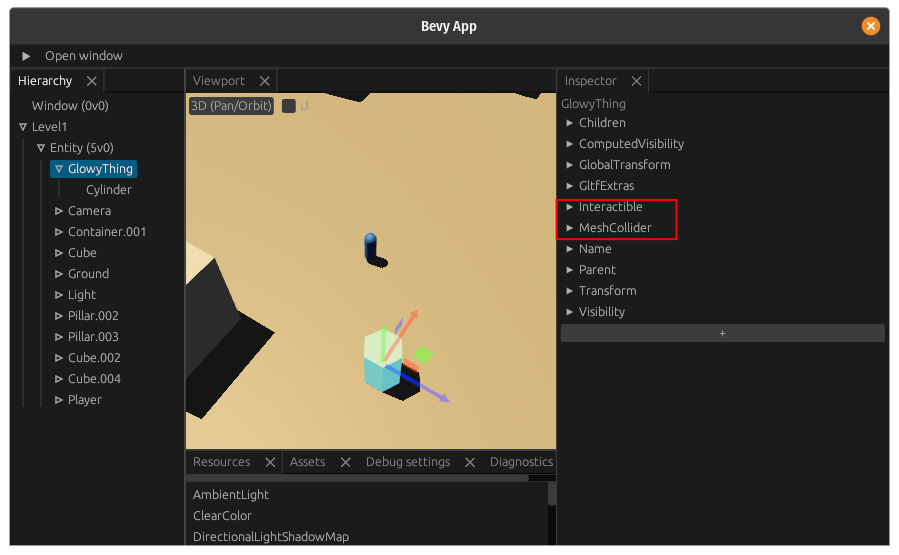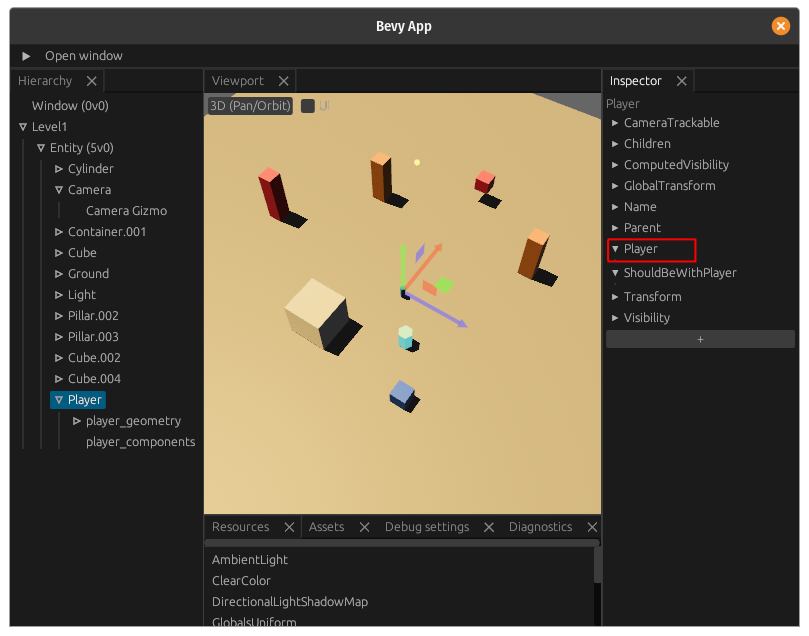* moved all reusable parts to core module / folder * moved all game specific code to game module * fixed small issue with camera & other minor tweaks |
||
|---|---|---|
| _docs | ||
| assets | ||
| src | ||
| tools/blender_auto_export | ||
| .gitignore | ||
| Cargo.lock | ||
| Cargo.toml | ||
| README.md | ||
Blender_gltf_components
This example, is actually closer to a boilerplate + tooling showcases how to use a minimalistic Blender (gltf) centric workflow for Bevy, ie defining entites & their components inside Blender using Blender's objects custom properties. Aka "Blender as editor for Bevy"
It also allows you to setup 'blueprints' in Blender by using collections (the recomended way to go most of the time), or directly on single use objects .
Workflow
The workflow goes as follows (once you got your Bevy code setup)
-
add the
process_gltfmodule code -
add the
ProcessGltfPlugin, to your app.add_plugins(( ProcessGltfPlugin ))(and any other
proxyprocessing plugins that you need ) see here -
create & register all your components you want to be able to set from the Blender side (this is basic Bevy, no specific work needed)
-
Create a mesh/ collection (for reuse) in Blender
-
Go to object properties => add a STRING property, and add your component data
-
unit structs, enums, and more complex strucs / components are all supported, if the fields are basic data types
- for structs with no params: use
nullas a value - for structs with params: use a json representation of your fields (see below)
In rust:
(the Rust struct for these components for reference is here )
In rust:
(the Rust struct for this component for reference is here )
- for structs with no params: use
-
-
for collections & their instances:
-
I usually create a library scene with nested collections
-
In the Level/world itself, just create an instance of the collection (standard Blender, ie Shift+A -> collection instance -> pick the collection)
-
-
export your level as a glb/gltf file : !!IMPORTANT you need to check the following:
- custom properties
- cameras & lights if you want a complete level (as in this example)
-
load it in Bevy (see the demo main file for this)
-
you should see the components attached to your entities in Bevy
note: you get a warning if there are any unregistered components in your gltf file (they get ignored) you will get a warning per entity
Additional notes
- You usually define either the Components directly or use
Proxy componentsthat get replaced in Bevy systems with the actual Components that you want
Included are the following modules / tools
process_gltfthe most important module: this is the one extractingcomponentinformation from the gltf filesinsert_dependant_componenta small utility to automatically inject components that are dependant on an other component for example an Entity with a Player component should also always have a ShouldBeWithPlayer component you get a warning if you use this though, as I consider this to be stop-gap solution (usually you should have either a bundle, or directly define all needed components)cameraan example post process/replace proxies plugin, for Camera that also adds CameraTracking functions (to enable a camera to follow an object, ie the player)lightingan other example post process/replace proxies plugin for lighting, that toggles shadows, lighting config, etc so that things look closer to the original Blender data
Feel free to use as you want, rip it appart, use any/all parts that you need !
This tooling and workflow has enabled me to go from a blank Bevy + Blender setup to a working barebones level in very little time (30 minutes or so ?) ! You can then add your own components & systems for your own gameplay very easilly
Information
- the Bevy/ Rust code is here
- the Blender file is here
- I added bevy_editor_pls as a dependency for convenience so you can inspect your level/components
Limitations / issues
- the components have to be defined in
JSONin Blender, which is a relic of my initial implementation, not very practical, rather verbose, will likely try switching to RON at some point, or even use the AppTypeRegistry and some Python code on the Blender side for a nicer UI (although this loses the "fast & easy, no tooling" approach) - the asset management in this example is stripped down for demo purposes, I normally use https://github.com/NiklasEi/bevy_asset_loader to define, organise and preload assets (in a different state that comes before the actual game/level), so you will see some of the changes to the level/scene "flash by"
- I did not include
bevy_rapier/physics code that I usually use to trim down the demo, but I kept some of the proxy items in the Blender scene, might add physics back as I wanted a cleaner way to define colliders from within Blender (currently it also goes via json)
Future work
- I have a number of other tools/ code helpers that I have not yet included here, because they need cleanup/ might make this example too complex
- gltf spawning tools where you just need to preload gltf files then you can spawn 1...n entities defined in gltf files by name (for example enemies, powerups, etc)
- simplified animation logic: ie instead of having to manually specify the animations you need from a gltf file, it is integrated with the spawning system above, which creates a
Animationscomponent in all entities that have anAnimationPlayerand you can simply query for both to easilly control your animations per entity.
Credits
- somebody I cannot recall helped me originally with the gltf loading tracker in the Bevy Discord, so thanks ! And if it was you, please let me know so I can give credit where credit is due :)
License
This example, all its contents & assets is licensed under MIT.
